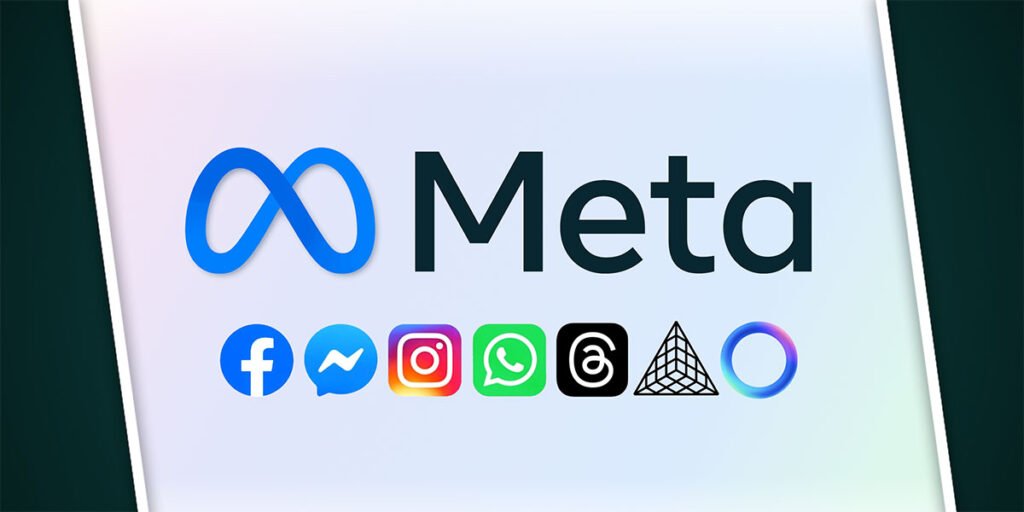In 2025, Facebook ads targeting is most powerful when it’s fueled by data you own. Your CRM, email list, website behavior, app activity, and purchase history are now the most valuable ad assets you have. When integrated properly into Meta’s ecosystem, via tools like the Conversions API (CAPI), this data doesn’t just improve delivery. It tells Facebook exactly who your high-intent customers are, even in a privacy-first world.
In this guide, you’ll learn:
- What qualifies as first-party data (and how to collect it ethically)
- How to upload and sync your CRM/email data with Meta
- How to use site activity and CAPI to enhance ad targeting
- Why first-party signals give you a major edge in retargeting, lookalikes, and optimization
If you want to future-proof your campaigns and make every impression count, this is where you start.
Understanding First-Party Data in the Facebook Ads Ecosystem
So, what exactly is first-party data? In Meta’s ad ecosystem, it includes any data you collect directly from your audience, with consent. Think:
- Email addresses from newsletter signups
- Phone numbers from checkout pages
- Purchase history, browsing behavior, and cart activity on your site
- Interactions through your mobile app or customer support platform
In contrast, third-party data comes from external platforms or trackers, like cookies that follow users across websites. Post-iOS 14.5 and with Google phasing out cookies, this kind of data is becoming less accurate and far less useful.
That’s why brands in 2025 are building their own data pipelines and treating Meta ad privacy strategy as core infrastructure. First-party data is not only more accurate, it’s also privacy-compliant when collected transparently.
When you integrate this data with Meta’s systems, via Custom Audiences, Lookalikes, or the Conversions API (CAPI), you give Facebook a direct signal of who your ideal customer is. That means better targeting, lower ad costs, and smarter optimization across every campaign stage.
Knowing how to collect first-party data for Facebook ads is now a baseline skill. The next sections will show you how to turn that data into a competitive advantage.
Building Custom Audiences with First-Party Data
One of the fastest ways to boost ad performance is by turning your existing customer data into high-converting Facebook Custom Audiences. If you’re sitting on a list of emails, phone numbers, or user IDs from your CRM, you already have a powerful targeting tool at your fingertips.
To get started, simply import your customer lists into Meta Ads Manager. Make sure your data is clean and formatted according to Meta’s match specifications, think clearly labeled columns (first name, last name, email, phone). Higher-quality data equals higher match rates, which means Facebook can more accurately serve your ads to the right people.
Once uploaded, segment your audiences based on behavior or lifecycle stage:
- Past buyers → for upsell and repeat purchase campaigns
- Newsletter subscribers → for limited-time offers or product launches
- Leads or free trial users → for conversion nudges
- Cart abandoners → for retargeting with urgency or incentive
Here’s a practical use case: Suppose you’re launching a new product line. You can target past purchasers with an upsell, or cross-sell based on what they previously bought, all powered by first-party CRM data.
When you use a Facebook custom audience from your CRM, you go beyond demographics and build relevance into every impression. You’re not guessing who your audience is, you already know, and that’s what gives first-party data its real edge in 2025.
Using Website & Event Data via Pixel and CAPI
While email lists are a great start, some of the most dynamic and timely audience signals come directly from on-site behavior, captured via the Facebook Pixel and the Conversions API (CAPI).
The Pixel tracks key website events like:
- ViewContent – Product pages viewed
- AddToCart – High purchase intent
- InitiateCheckout – Funnel progression
- Purchase – Final conversions
But due to browser restrictions, ad blockers, and tracking limitations, Pixel data alone is no longer enough. That’s where CAPI (Facebook’s Conversion API) comes in. It sends the same events, server-side, making your data more accurate and less likely to be blocked.
For a solid Facebook CAPI targeting strategy, you should implement both Pixel and CAPI together. This dual setup ensures event redundancy, better signal clarity, and stronger optimization.
Once your tracking is in place, you can create behavioral audiences based on:
- Time spent on site (e.g., 30+ seconds)
- Specific page views (e.g., pricing or product pages)
- Funnel stages (e.g., added to cart but didn’t check out)
These Facebook event-based audiences allow you to personalize your ads to match user intent. For instance, someone who viewed a product three times but didn’t purchase? They’re ready for a retargeting campaign with a limited-time offer.
And if you’re wondering about conversion API vs Pixel, use both. They’re not competitors; they’re collaborators in building smarter, more reliable first-party data funnels.
Targeting with CRM & Offline Conversions
Your CRM isn’t just for email marketing, it’s a goldmine for Facebook ad targeting, especially when synced properly. Whether you use HubSpot, Mailchimp, Klaviyo, ActiveCampaign, or another tool, Meta lets you directly integrate or sync segmented lists for smarter, real-time audience targeting.
This level of CRM Facebook ads integration unlocks several powerful tactics:
- Sync segments like leads, trials, or MQLs into Meta
- Retarget customers who’ve interacted with email campaigns but haven’t converted
- Trigger lookalikes based on your highest-value buyers or subscribers
Beyond syncing lists, you can upload offline conversions, in-store purchases, sales calls, events, to Meta Ads Manager. This allows you to train Facebook’s algorithm using real-world, revenue-driving events, helping the system optimize for what matters most.
Example: If you run a SaaS business and close deals via demo calls, uploading offline conversion data gives Facebook visibility into your full funnel, not just the ad click. That means better optimization, better reporting, and ultimately, better ROAS.
Using your CRM this way turns your Meta campaigns into a smarter system, one that targets based on high-intent behavior, not broad assumptions.
Dynamic Retargeting with Product Feeds + First-Party Signals
Dynamic retargeting is where personalization meets scale, and when powered by first-party data, it becomes your most efficient revenue driver. By combining Meta’s Product Catalog with first-party event signals from your Pixel and CAPI, you can serve highly personalized dynamic ads that meet users exactly where they left off.
Example: A user viewed two products but didn’t add them to cart. Your ad shows those exact items, along with a “You might also like” carousel featuring similar or complementary products. It’s frictionless and contextual.
For Facebook dynamic product ads (advanced use), follow these best practices:
- Ensure your product feed is clean, categorized, and updated in real-time
- Use event-based audiences like ViewContent or AddToCart for precision retargeting
- Create creative variations for different AOV (Average Order Value) ranges, especially important for high-ticket products, where the CTA and urgency need to be handled differently
You can also rotate messaging for cart abandoners, upsell past purchasers with accessories, or re-engage top-of-funnel visitors with trending products.
When you combine retargeting website visitors on Facebook with behavioral signals and catalog automation, you shift from “ads that follow” to ads that guide, and that’s where real conversions happen.
Lookalike Audiences from First-Party Sources
First-party data doesn’t just help with retargeting, it’s also your best source for scaling. By creating Facebook Lookalike Audiences (LLAs) from your highest-quality customer data (like purchase lists or top leads), you let Meta find more people who behave like your best converters.
Start by uploading a well-segmented list, such as:
- High-LTV customers from your CRM
- Frequent purchasers
- Engaged email subscribers
- Users who’ve completed high-value actions
From there, create tiered LLAs:
- 1% Lookalike – Closest match to your source data, best for direct conversions
- 3–5% LLAs – Wider reach, perfect for testing scaling potential
- Value-Based LLA – Ranks your audience by customer value, letting Facebook prioritize high-spending users
These LLAs consistently outperform interest-based targeting, especially post-iOS 14.5, because they rely on actual behavioral data, not assumptions.
Let’s say your email list has 5,000 past buyers. Building a Facebook lookalike audience from that email list gives you access to thousands (or millions) of users with similar traits, without starting from scratch.
This is how you scale smartly: LLA targeting high-converting users makes your budget work harder and reach people statistically more likely to buy, sign up, or engage.
Compliance, Consent & Privacy Best Practices
With great data comes great responsibility, and Meta ad data compliance is now a critical part of every campaign. Whether you’re collecting emails, phone numbers, or behavioral data, privacy and consent must be front and center.
Here’s what to keep in mind:
- Always obtain explicit consent when collecting personal info for ad use, ideally through opt-in checkboxes with clear language (e.g., “I agree to receive marketing communications”)
- Stay compliant with GDPR (Europe) and CCPA (California) by offering unsubscribe options and honoring data deletion requests
- When uploading customer data to Meta, you must confirm that the data was collected with consent for advertising purposes
Meta may restrict or disable your ad account if you violate Facebook custom audience privacy requirements, and in some cases, even penalize the business.
Bottom line: Data compliance isn’t optional. It’s part of running a sustainable, scalable Meta ads strategy. Build trust while respecting user rights, and your ads will go further, with no risk to your business.
Real-World Examples or Mini Case Studies
To see the power of first-party data in action, let’s look at two quick case studies:
eCommerce Example
A mid-sized skincare brand segmented its email list by product interest and purchase behavior, then uploaded it into Meta as Custom Audiences. They retargeted cart abandoners with personalized offers and sent upsell ads to past buyers.
- CTR: 3.1%
- ROAS: 4.5
- CPL: $9.20
They also used Lookalikes based on high-LTV customers to scale prospecting campaigns without sacrificing ROAS.
B2B Example
A SaaS company running lead-gen webinars uploaded registrant and attendee lists into Meta. They retargeted attendees with demo offer ads and created LLAs from their highest-converting leads.
- CTR: 2.6%
- ROAS: 3.8
- CPL: $27 (for a $150+ LTV product)
These mini case studies highlight that Facebook targeting with first-party data isn’t theory, it’s working across industries, verticals, and budget sizes.
Conclusion
First-party data is no longer optional, it’s the foundation of scaling Meta ads effectively in 2025. With third-party tracking fading and platform privacy tightening, advertisers who rely solely on Pixel-based strategies are at a disadvantage. Meanwhile, brands using their own data, CRM records, email engagement, website events, are building smarter, more resilient ad funnels.
Integrating CRM platforms, Pixel events, and email segmentation into one cohesive strategy gives you a level of control and precision that interest-based or broad targeting can’t offer. Whether you’re retargeting warm leads, building high-quality lookalikes, or feeding Facebook better optimization signals through CAPI, first-party data gives you the edge.
If you’re serious about increasing ROAS and growing your monthly ad spend without guesswork, now is the time to align your systems. Audit your current setup, plug in the right data sources, and treat your audience segments as dynamic assets, not static lists.
The next step is simple: start integrating your CRM, Pixel, and email tools into your Meta ads workflow. That’s how the most successful brands scale in a post-cookie world, with strategy, structure, and owned data.




